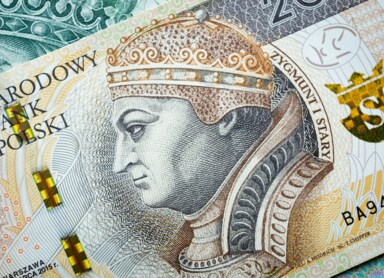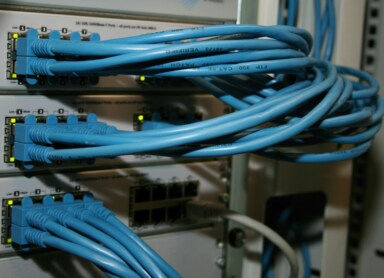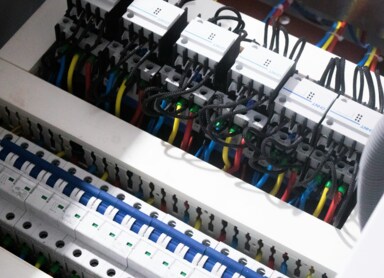How is electricity generated? Everything you need to know
Today, it may seem obvious that practically every home has access to electricity, with power flowing from every outlet. However, electricity itself was not invented—it simply exists. The history of electrical engineering, on the other hand, is relatively short and dates back to the 17th century. Of course, several centuries had to pass between William Gilbert’s invention of the first versorium and the production of photovoltaic panels, but in both cases, electricity is involved. So, what exactly is it, and how is it generated?
How electric current Is generated — basic information
First, let’s answer the question: what exactly is electric current? From a scientific perspective, it is the directed movement of electric charge carriers through a conductive material, occurring under the influence of an electric field.
In nature, electric current is generated primarily through atmospheric discharges. Lightning forms within storm clouds. As ice particles and water droplets collide, they build up electrostatic potential. Eventually, the difference in potential between the cloud and the Earth becomes so great that an electrostatic discharge occurs. In this case, the charge carrier is the air.
How electricity is generated in power plants — different production technologies
Understanding the nature of electric current has allowed humans to harness it. Today, electricity is primarily produced in power plants. Let’s take a closer look at the different technologies used to generate it.
How is electricity generated in a wind power plant?
Wind farms are built in locations with favorable wind conditions. These are usually spacious, flat, and open areas where the wind can reach speeds sufficient to set the rotor—the key component of a wind turbine—in motion.
The kinetic energy of the wind is converted into mechanical energy when the blades cause the rotor to spin. The rotor, in turn, drives a generator that produces electricity. The efficiency of a wind power plant depends on many factors, including the generator’s specifications as well as the strength of the wind. Additionally, fluctuations in efficiency can occur due to vibrations of the tower or the nacelle itself, as well as when a blade passes in front of the rotor (a phenomenon known as the shadow effect).
Wind-powered plants are classified as renewable energy sources (RES), since they do not require the use of fossil fuels.
How is electricity generated in a hydroelectric power plant?
Hydropower is another method of producing electricity, involving the design and construction of hydroelectric plants. Water energy can be divided into that derived from seas and from inland sources—the former has greater potential, while the latter is more easily accessible. The flow of water, such as in rivers, or its drop in elevation, is harnessed to generate electricity. To achieve this, hydro turbines are used—large engines that convert the energy of flowing water into mechanical energy through the movement of blades connected to a rotor.
Depending on the technology applied, different types of turbines are used in hydroelectric power plants, including Francis, Deriaz, Kaplan, and Pelton models. The first three are so-called reaction turbines, where the inlet pressure exceeds atmospheric pressure. The Pelton model, on the other hand, is an impulse turbine, in which the inlet pressure is equal to atmospheric pressure.
As in the case of wind turbines, the rotor drives a generator, which then produces electricity.
Hydroelectric plants generate stable and relatively inexpensive energy, but this solution is not without drawbacks. Most importantly, it requires access to water resources. Moreover, although the process of electricity generation itself is environmentally friendly, such facilities can negatively impact ecosystems. They may cause sediment buildup on reservoir beds, leading to a decline in biodiversity.
How is electricity generated in a nuclear power plant?
Electricity is also produced in nuclear power plants. This is a relatively new solution, but an extremely efficient one. It is estimated that 1 kilogram of natural uranium can generate as much energy as burning several dozen tons of coal. At the same time, the cost of a kilogram of uranium is roughly the same as that of a ton of coal. So, how is electricity produced in this case?
A nuclear power plant generates electricity through the process of nuclear fission, in which the nuclei of uranium atoms are split. This reaction releases enormous amounts of heat, which must be absorbed by a water-based cooling system. First, the heat is taken up by liquid water circulating in the primary loop, which then transfers it to the secondary loop, where the water turns into steam. The steam is then dried and directed to a turbine, which drives the electricity generator.
Modern nuclear power plants are distinguished by very high safety standards. They use advanced protection systems. Most importantly, the uranium itself is formed into small pellets placed in special fuel rods. The reactor building and its supporting infrastructure are also carefully protected. Although nuclear plants use uranium mined from the Earth, they are considered a source of renewable-like energy due to the extraordinary efficiency of this fuel. In fact, modern nuclear power plants can operate for up to 80 years.
How is electricity generated in a coal power plant — step by step
For decades, Poland’s energy sector relied heavily on coal power plants, due to the easy availability and large reserves of coal—both hard coal and lignite—which made the raw material relatively cheap. A coal-fired power plant generates electricity using steam produced by burning coal. The steam passes through high-, medium-, and low-pressure sections before finally reaching the generator, where electricity is produced.
Coal power plants are relatively inexpensive to build and maintain, but they pose serious environmental risks. Above all, they require intensive exploitation of natural resources. They also contribute to the greenhouse effect through the emission of harmful compounds into the atmosphere. For this reason, more and more economies around the world are gradually moving away from coal-based energy systems and shifting toward renewable energy sources.
Sources of electricity — where does the power in our homes come from?
Electricity can reach homes and factories through two main channels. The first is the power grid operated by the DSO (Distribution System Operator)—the familiar “cables,” masts, and poles visible from almost every window. This network transmits electricity regardless of its origin, whether it comes from wind, water, or other sources.
The second source is photovoltaics. Depending on where the electricity is produced, it can either be supplied through the grid or generated directly at the site of consumption (known as offsite or onsite photovoltaics).
In both cases, the generation of electricity is based on the photovoltaic effect. This process occurs when photons from sunlight excite and knock electrons out of the outer shells of silicon atoms. As a result of the potential difference created, direct current (DC) electricity is produced, which is then converted into alternating current (AC) by an inverter.
At REO.pl, we support the energy transformation of businesses. If you want to implement eco-friendly solutions in your company, we can help!






